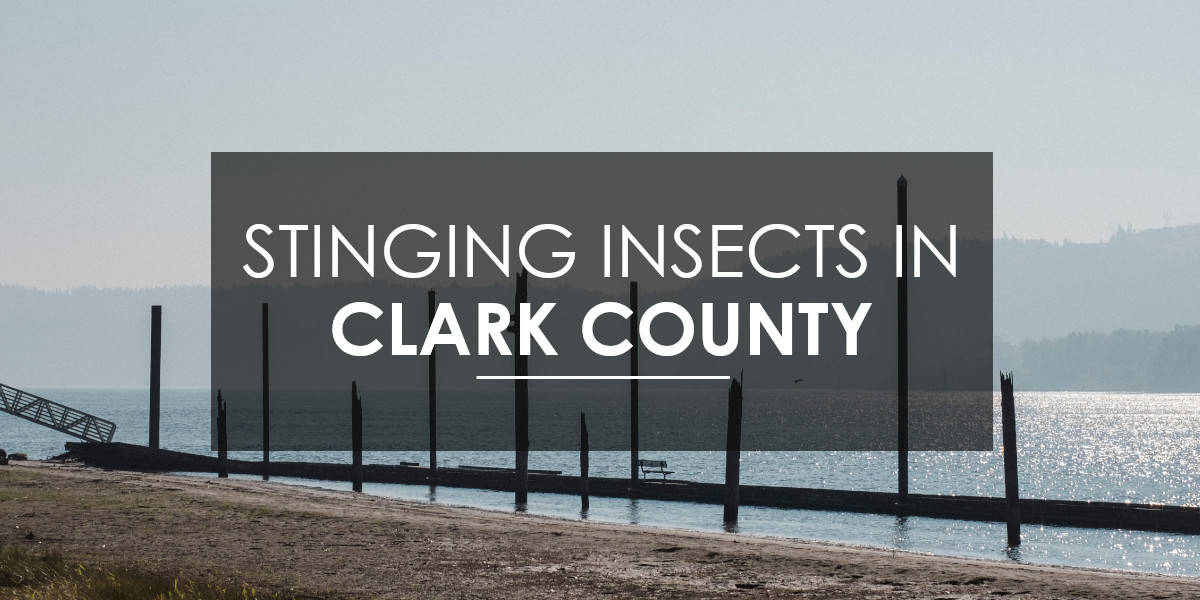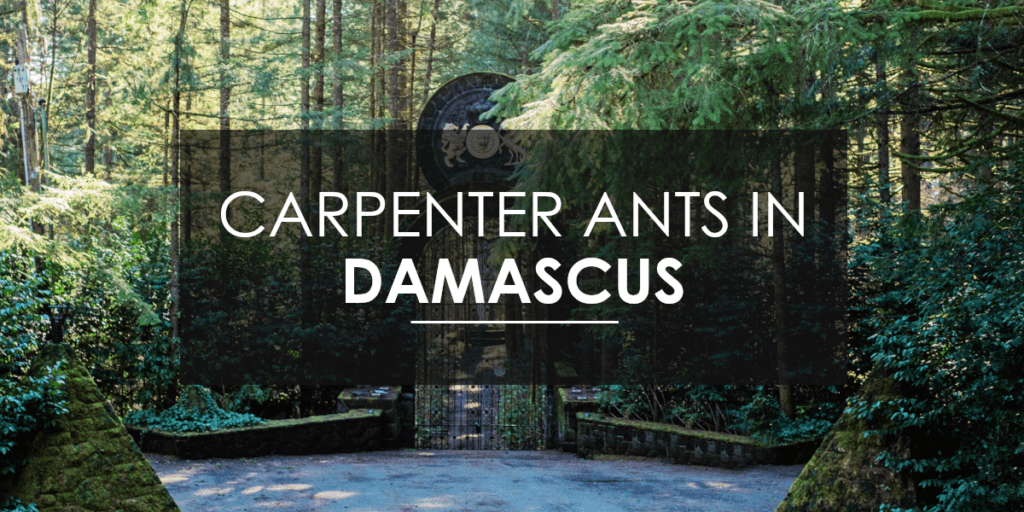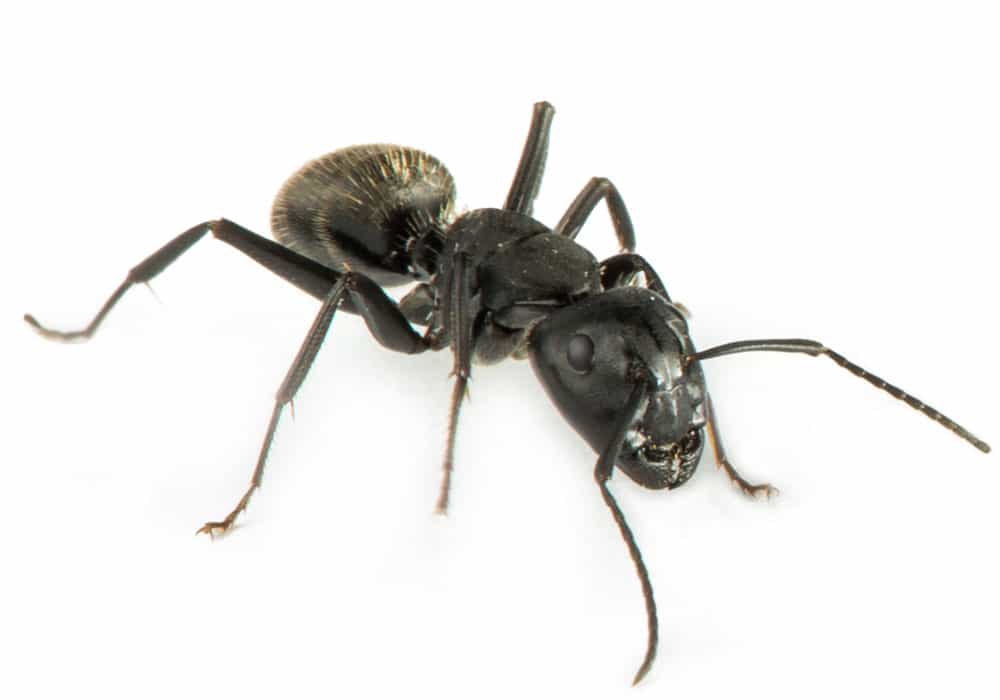Wasps, yellow jackets, and hornets are often confused for being different names for the same insect, when, in fact, wasps, yellow jackets, and hornets are distinctly different creatures that pose different sorts of threats to your family’s well-being.
However, there is one commonality that is for certain when it comes to wasps, hornets, and yellow jackets in Clark County: they sting — and their stings can hurt, or in some cases, cause allergic reactions ranging from uncomfortable to life-threatening.
When it comes to treating your home and property and protecting your family from these insects, it’s important to know the difference.
What to know about paper wasps in Clark County
Most insects that we refer to as “wasps” in the Clark County, WA area can be more specifically identified as “paper wasps.” (Hornets and yellow jackets are specific types of wasps. More on that later!) Paper wasps are typically one-half to one-and-a-half inches in length, black or dark brown with distinct yellow markings throughout their bodies.
Paper wasps are named for the way in which they construct their nests. Paper wasps will use organic materials like plant matter and dead wood in combination with their saliva to create the almost paper mache-like material that is wrapped around the combed portion of the nest where the colony resides.
Paper wasps in Clark County build their nests on flat, horizontal surfaces like eaves, ceilings of covered porches, soffits, and gutters. These are spaces that protect the colony from extreme weather and other external threats.
Paper wasps are pollinators and are attracted to flowering plants, making domesticated yards highly desirable spaces. Outdoor spaces where folks live and entertain — anywhere where sugary foods and drinks are consumed — make for even more attractive fare for these sugar-loving creatures.
Though paper wasps are not typically aggressors, paper wasps will sting people if they feel they or their nest is being threatened, harmed, or disturbed.
Their sting is painful, but is not usually life-threatening, save for those folks who have more serious allergies.
How do I exterminate paper wasps in Clark County?
Professional wasp control for your home and property are important to your family’s well-being and peace of mind. Paper Wasps in Clark County can be active and early as February and as late as November, making regular pest control a near year-round activity. Colonies often follow the same flight patterns year-after-year, and as a result, tend to build their nests in similar locations.
Aspen Pest Control provides services that, through regular maintenance, disrupt these colonization patterns, thereby making your property a less than desirable locale for paper wasps and their peers to build nests on.
What to know about hornets in Clark County, Washington
Hornets, as stated earlier, are a specific type of wasp and are distinctly different than the paper wasp. Typically bigger than the paper wasp, hornets can grow up to two inches in length, and, in addition to the traditional black, dark brown, and yellow markings of the paper wasp, hornets can also feature reddish brown markings on their abdomens.
The most common variety of hornet found in the Clark County, Washington area is called the bald-faced hornet. These creatures nest in the same basic manner as paper wasps, constructing their nests through a combination of their own saliva and plant matter. Their colonies consist largely of female hornets who are responsible for the maintenance and protection of the colony above all else.
Males are used specifically for breeding, and tend to die shortly after mating has occurred. Like paper wasps, bald-faced hornets found in Clark County are omnivorous. In addition to their consumption of plant matter and playing an important role in the pollination of flowering plants, they also play a key role in pest control, dining on smaller wasps, caterpillars, crickets, grasshoppers, and the like.
Though they are our allies in certain types of pest control, hornets are a nuisance (sometimes a very dangerous one!) to have on your property. Like the paper wasp, hornets are not typically outwardly aggressive, but they will defend their nest if they feel it to be threatened. If you see their nests on your property, particularly in areas where people gather or children play, then it’s important to have these spaces examined and nest removed by professionals who possess the proper equipment, training, and approach to their removal.
What to know about yellow jackets in Clark County, Washington
Yes, technically, yellow jackets are a variety of wasp, but they are distinctly different creatures, including their appearance, diet, manner of nesting, and general demeanor. To be clear, yellow jackets are much more outwardly aggressive than their paper wasp and bald-faced hornet cousins.
Yellow jackets are usually one-half to one-full inch in length. Though their nests are constructed in the same manner as the paper wasp and the bald-faced hornet, they are sometimes as large as a basketball and can contain as many as 4,000 individual insects. Instead of constructing these nests in the usual places where those of their cousins are found, yellow jackets seek out more guarded spaces, often building in abandoned rodent nests underground, in shrubs, or in cavities of trees. Keeping these nests closer to the ground and out of the view of any potential threats is key to the yellow jacket.
Unlike paper wasps and bald-faced hornets, yellow jackets are not typically pollinators. They are attracted to sweet substances, and are even drawn to eating meat. When entertaining, the yellow jacket is the most likely culprit of this variety that will be drawn to closely examining your refreshments. Have a yellow and black striped insect crawling in and out of soda cans, around the rims of drink glasses, or across any manner of food that’s been prepared? Odds are it’s a yellow jacket doing the literal dirty work.
As referenced earlier, yellow jackets are far more aggressive than most of their other wasp counterparts. There’s no hesitation in their aggression (meaning they won’t wait to feel threatened — your general presence is threat enough) and they are capable of stinging repeatedly. If you’ve come across a yellow jacket nest do not disturb it and do not attempt to remove it yourself. Make sure everyone steers clear of this area while you seek out professional assistance in properly exterminating this colony and removing the nest.
How do I exterminate wasps, hornets, and yellow jackets
in Clark County, Washington?
We recommend seeking out professional assistance when it comes to the eradication of wasps, hornets, and yellow jackets. With such long life cycles, natural inclination to rebuild nests in similar areas, and the general aggression of these insects, having professionals who possess the experience, equipment, and commitment to total extermination is the level of service you deserve for your family’s well-being and protection.
At Aspen Pest Control, At Aspen Pest Control, we use safe, environmentally friendly methods that will ensure total elimination, and nest removal comes standard with this service. We use specialized tools for removal in order to keep your family safe, and your home damage-free.
Contact us today for a free estimate. In most cases, we can provide same-day service. It’s time to take back control of your yard. Aspen Pest Control can help make that possible. Call today!







